Blog 06/28/2024 - 40th Anniversary of the Battle of Iwo Jima

The above U.S. Marine Corps graphic depicts the Iwo Jima invasion plan & lays out the island’s geography. Mt. Suribachi lies at the extreme southern tip with the initial day’s landing beaches trailing off to the northeast. In its 36 days of combat, the Marine Corp’s Vth Amphibious Corps’ (VAC) three divisions killed approximately 23,869 Imperial Japanese soldiers & sailors. The cost was staggering for both militaries. The assault regiments of the corps, Marines & organic Navy personnel, sustained 24,053 casualties, by far the highest battle KIAs & WIAs in Marine Corps history. Of these, a total of 6,140 were KIA. Roughly one Marine or corpsman became a casualty for every three who landed across the Black Sands.

According to a subsequent analysis by military historian Dr. Norman Cooper, "Nearly seven hundred Americans gave their lives for every square mile. For every plot of ground, the size of a football field, an average of more than one American and five Japanese were killed and five Americans wounded." As indicated by the graphic key, all distances on Iwo Jima are short as the island is just over 8 square miles in size.

Marine planners expected fighting to last for only five days, but the defenses laid out by Imperial Japanese Army (IJA) Lieutenant General Kuribayashi would take 38 days to overcome at a loss of nearly a quarter of all Americans involved in the operation. The Marines took approximately 40 casualties for each yard of beach gained on the invasion’s first day. Of the 22,786 Japanese defenders, only 1,083 would survive the conflagration. Less than half of the IJA & Imperial Japanese Navy (IJN) remains have been recovered & renamed Iō-tō is considered that Japan’s largest national cemetery.

On February 19, 1985, the 40th anniversary of the day that U.S. forces began the assault on the island, veterans from both forces gathered for the first Reunion of Honor just above the beach where the spot the VAC landed on the island.
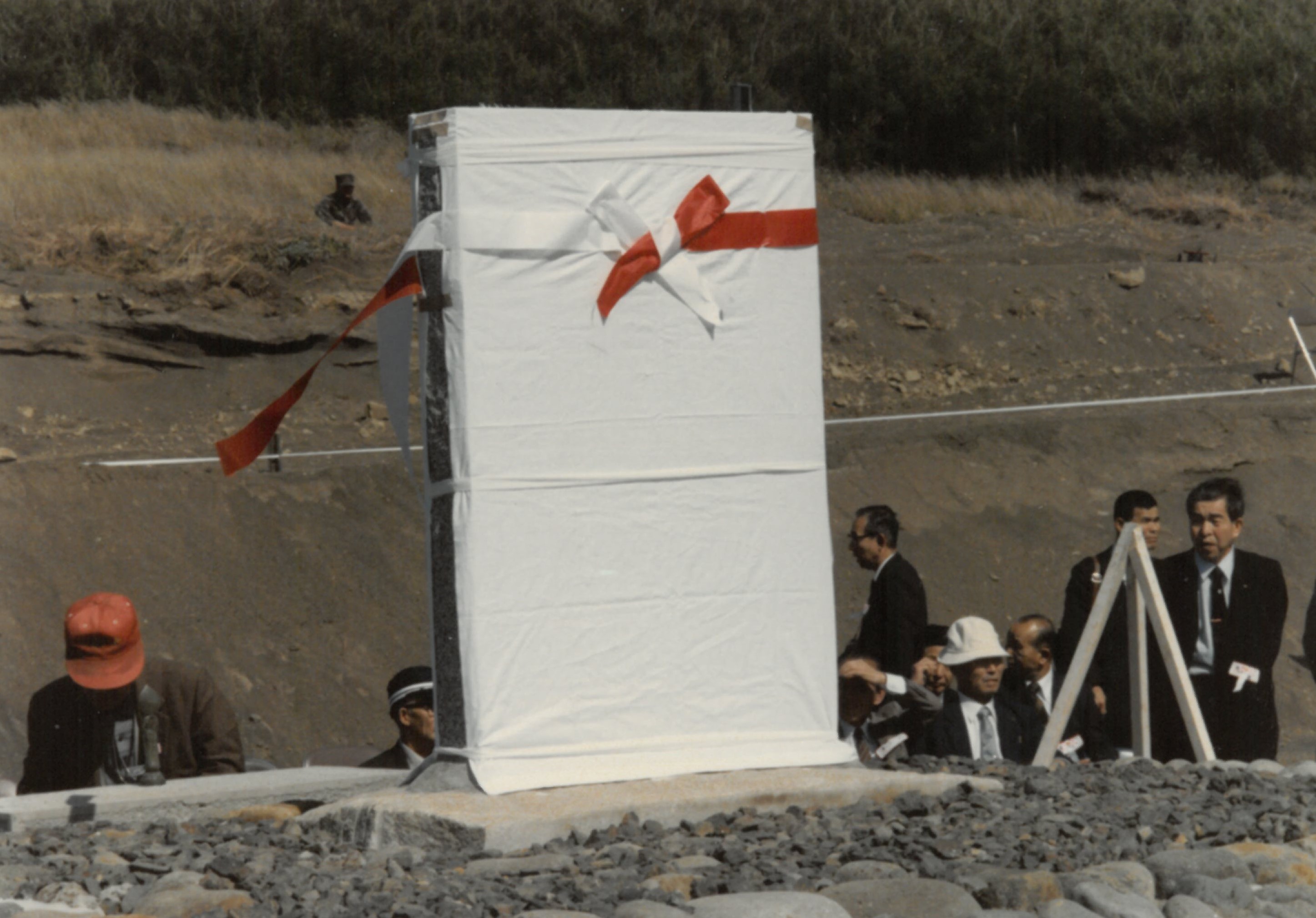
During the memorial service a granite plaque was unveiled with the message:

“On The 40th Anniversary Of The Battle Of Iwo Jima, American And Japanese Veterans Met Again On These Same Sands, This Time In Peace And Friendship.

We Commemorate Our Comrades, Living And Dead, Who Fought Here With Bravery And Honor, And We Pray Together That Our Sacrifices On Iwo Jima Will Always Be Remembered And Never Be Repeated.
February 19, 1985
3rd, 4th, 5th Division Associations: USMC And The Association Of Iwo Jima”
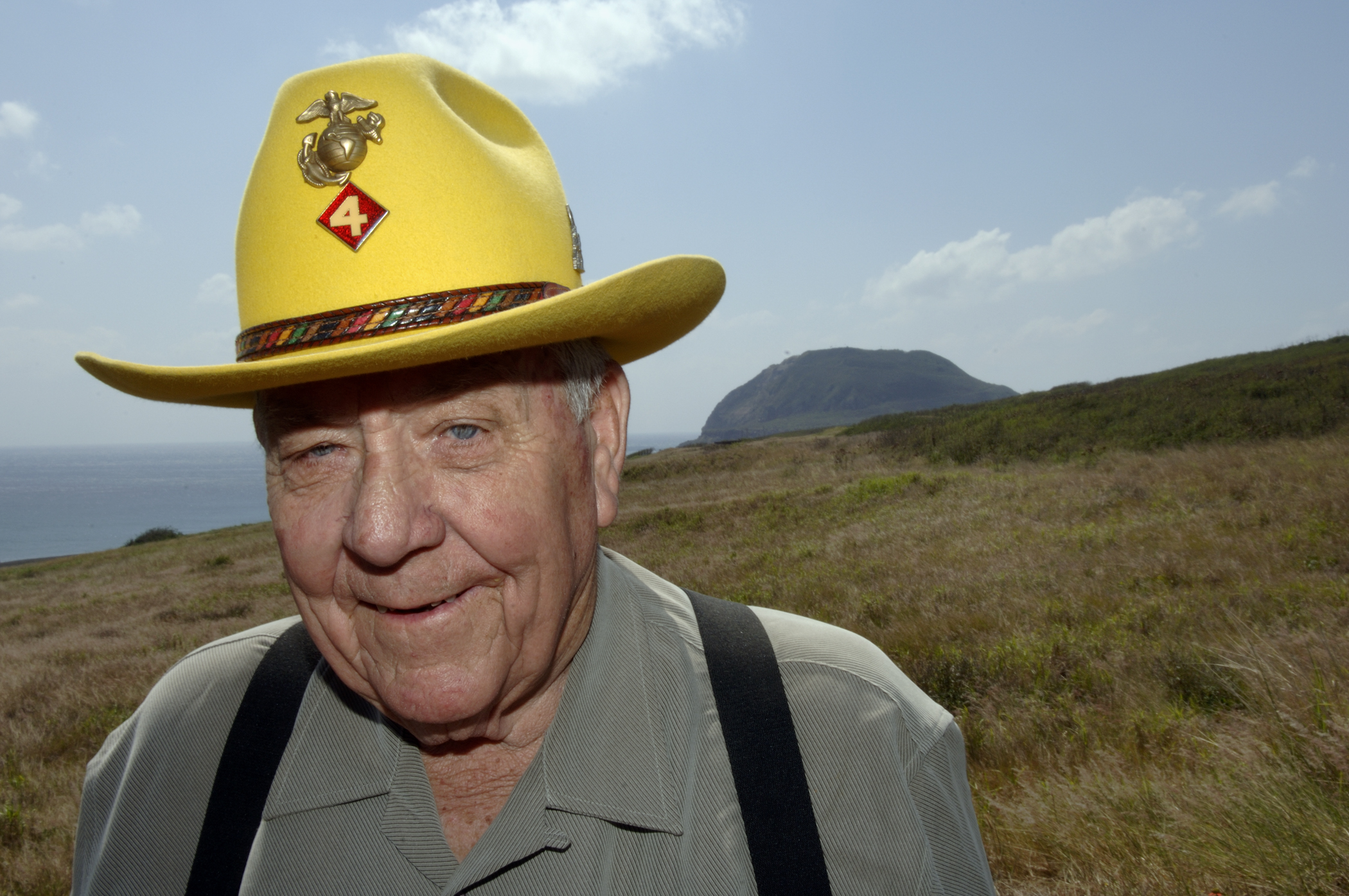
It is inscribed on both sides of the plaque, with the English translation facing the beaches where U.S. forces landed & the Japanese translation facing inland, where Japanese troops defended their underground positions.

10 years later for the 50th Reunion of Honor two brass plaques below the stone are inscribed in Japanese & English. The English reads:
“Where We Once Met In War, We Now Meet In Peace.

In Commemoration Of The 50th Anniversary Of The Battle Of Iwo Jima. The Survivors Of The Battle Have Joined Together Once Again To Reaffirm Their Bonds Of Friendship Which Our Two Countries Now Enjoy. May We, The Survivors Of Iwo Jima, Resolve To Never Allow The World To Forget The Sacrifices Made To Ensure The Peace We Enjoy Today.
The Survivors Of Iwo Jima
March 14, 1995”
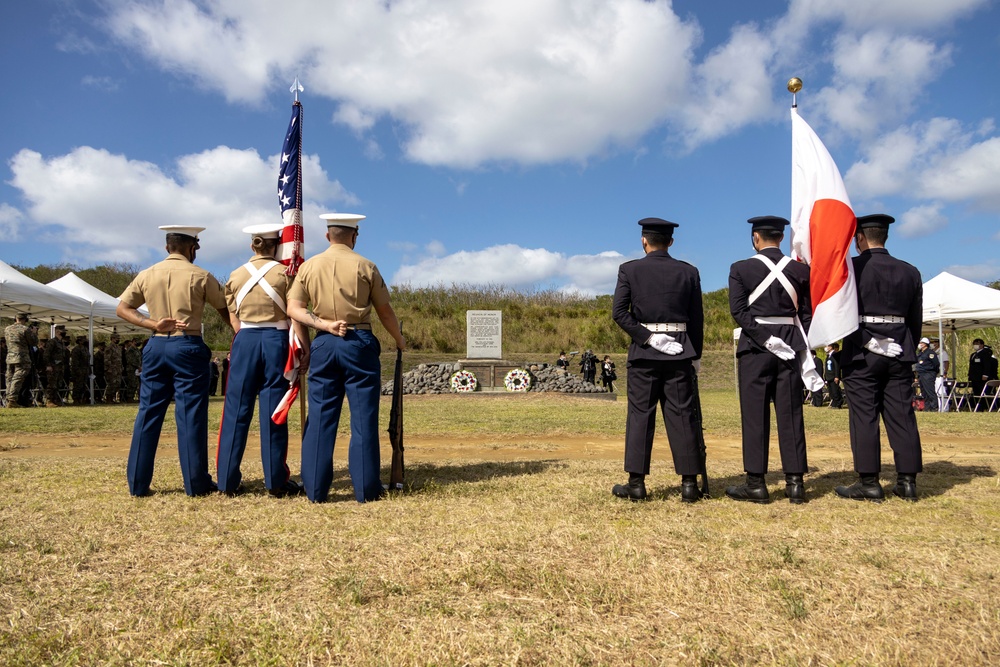
Wreaths are laid in honor of all the lives lost during the battle as part of the Reunion of Honor Ceremony. The annual ceremony commemorates the sacrifices made by Japanese & American service members who fought in the Battle of Iwo Jima. The ceremony also celebrates the important U.S.-Japan alliance.

The 40th Reunion of Honor was filmed by television producer & writer Arnold Shapiro called “Return to Iwo Jima. Shapiro a 52-year Hollywood veteran that has produced over 90 nationally-televised documentary series & specials for every broadcast network plus 14 cable channels from MTV to HBO. Starting with 1978’s Oscar & Emmy Award-winning film, "Scared Straight!" He has 150+ awards including 16 Emmys, an Academy Award, the People's Choice Award, the Peabody Award, & the International Documentary Association's Lifetime Career Achievement Award.
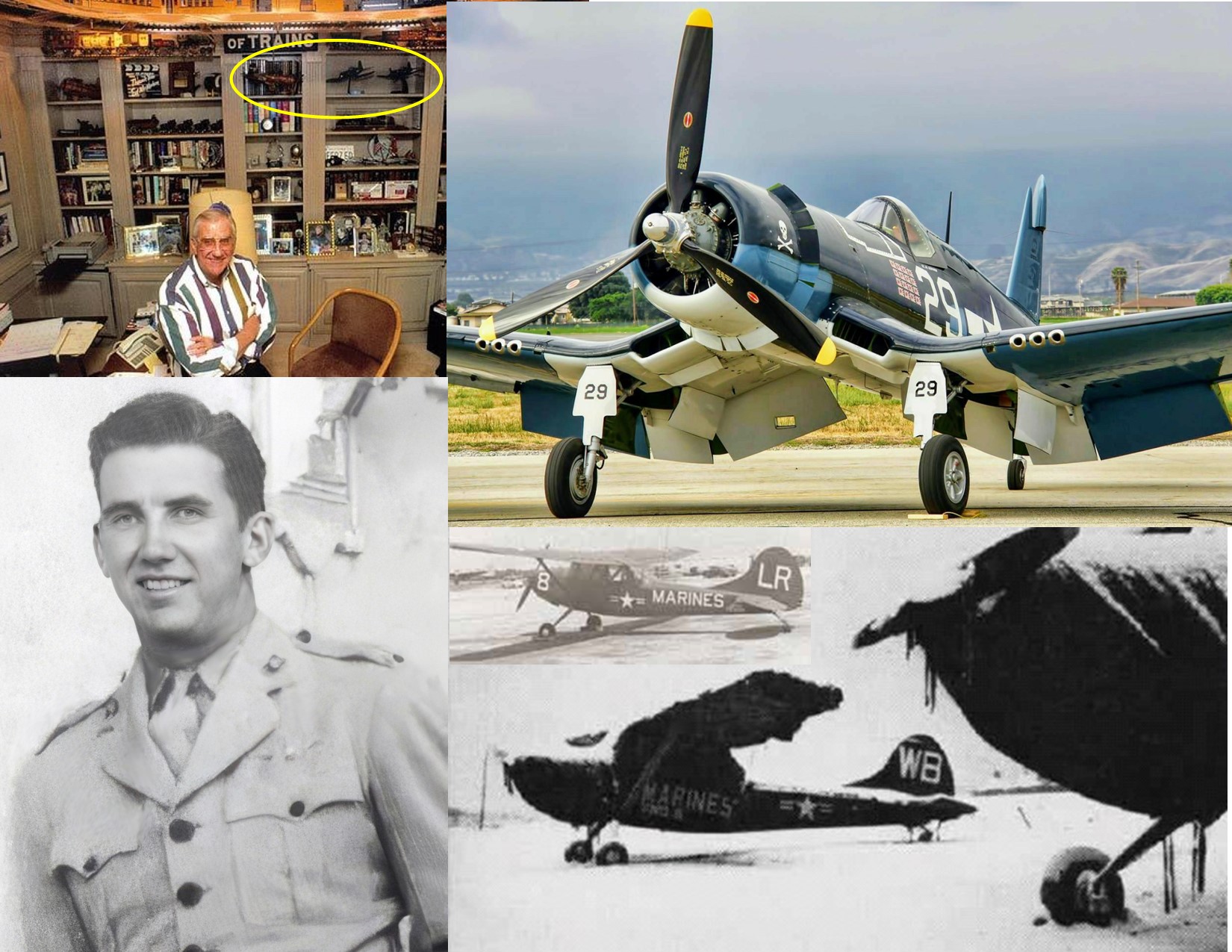
Arnold Shapiro wisely made Ed McMahon the documentary’s narrator. One of the great story tellers, he knew the subject as a Marine Corps flight instructor in F4U Corsair fighters during WWII. As an officer in the Marine Corps Reserve, McMahon was recalled to active duty during the Korean War, flying an OE-1 (the Marine designation for the unarmed single-engine Cessna O-1 Bird Dog) spotter plane, serving as an artillery spotter for Marine artillery batteries & as a forward air controller for Navy, Air Force & Marine fighter bombers.
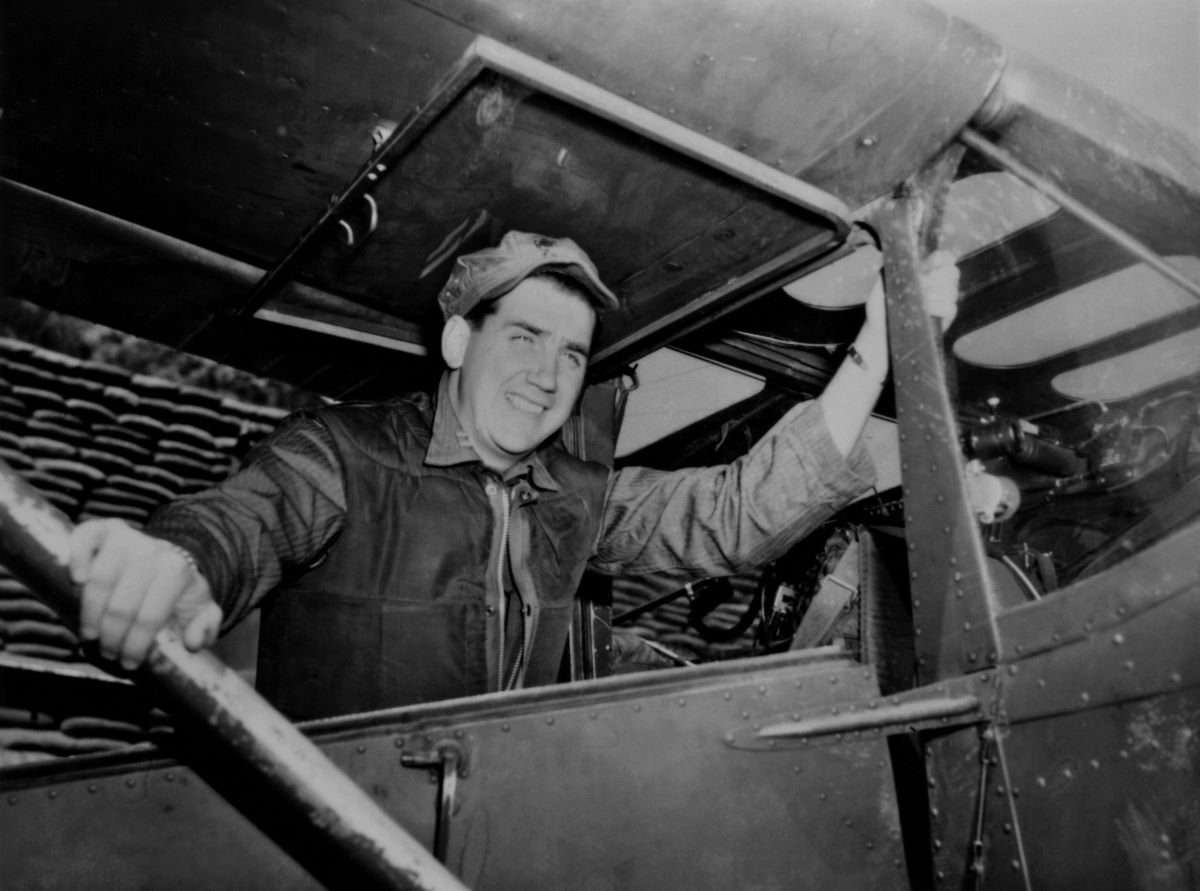
Big Ed flew a total of 85 combat missions, earning six Air Medals. After his second war, he remained in the Marine Corps Reserve, retiring in 1966 as a Colonel.

Here is a review of “Return to Iwo Jima”:
“Forty Years Later, Survivors Return to Iwo Jima, Their Painful Memories in Focus”
By Jack Smith [A Combat Correspondent] - LA Times (May 27, 1985)

LtGen Charles G. Cooper, USMC Commanding General Fleet Marine Force PAC attended the 1st Reunion of Honor
I went out to KCET [a PBS member television station in Los Angeles, CA] the other day for a preview screening of “Return to Iwo Jima,” a one-hour documentary that will be shown publicly on KCET at 10 tonight.
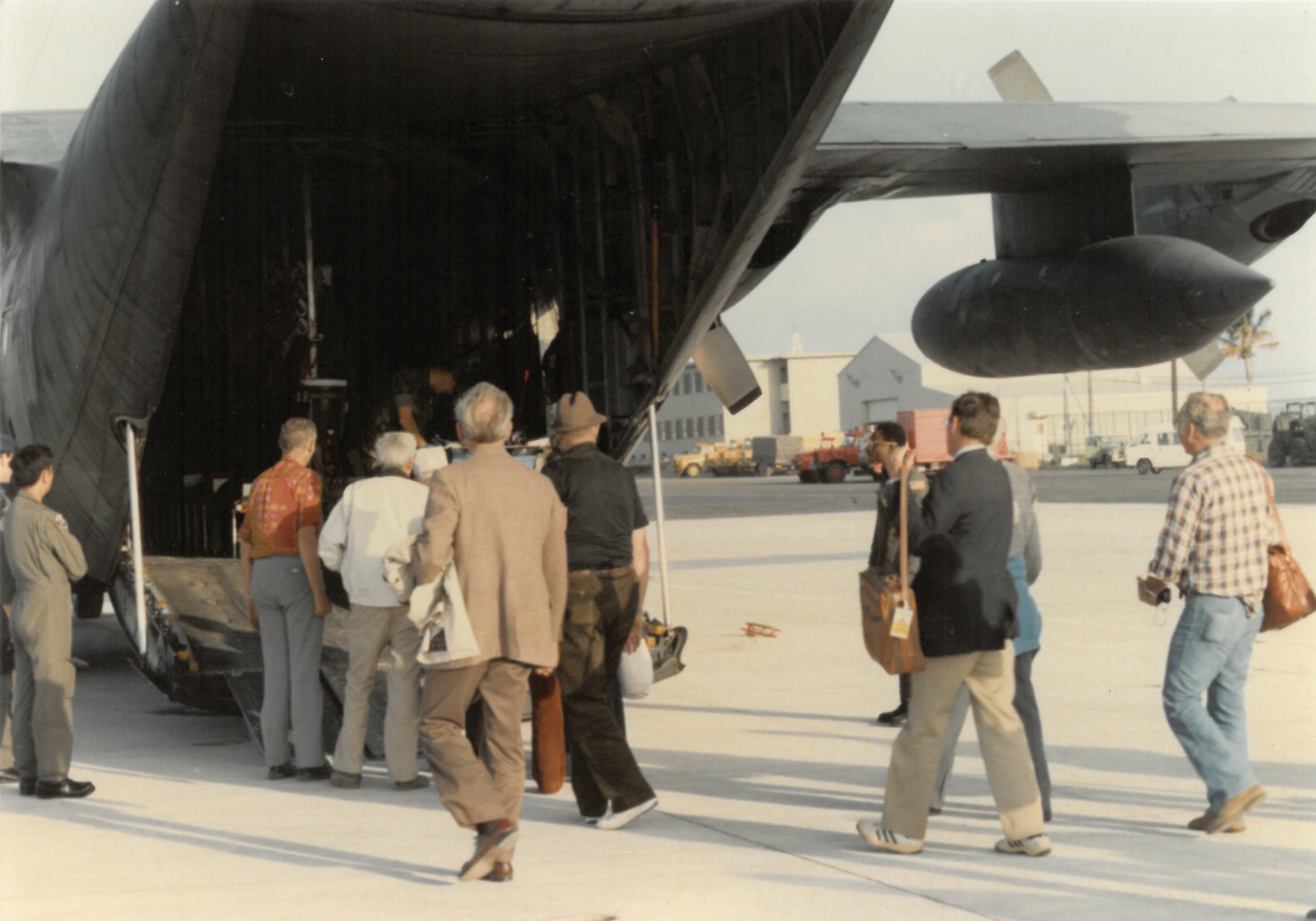
I was invited to the screening, I suppose, because I am a survivor of Iwo Jima, and this film is about survivors.
It is not about victory; it is not even about courage, though courage is always implied; it is about survivors, and how they have dealt with their memories of that obscenely bloody battle.

It focuses on four Americans and two Japanese survivors who took part, along with 300 others, in a return to Iwo Jima last February, on the 40th anniversary of the landing. The Japanese contingent included many widows, since there were so few Japanese survivors.

In case Iwo Jima has slipped your mind, it is a small island of volcanic rock and ash, only eight square miles in area, and shaped like a pork chop. It lies in the western Pacific halfway between Guam and Tokyo. Our high command decided we needed it as a haven for B-29s returning from Japan.
On the morning of Feb. 19, 1945, the greatest armada of the Pacific War surrounded Iwo, about 500 ships, and at 9 a.m. the first assault wave landed on the beach, moving behind a rolling barrage laid down by cruisers and battleships.
In 36 days, the island was secured. Of its garrison of 22,000 Japanese, only 1,000 survived. There were 25,851 American casualties, including 6,821 dead--one-third of all the Marines killed in the Pacific. The landing was more costly than the landing at Normandy. The intense battle produced 27 Medals of Honor the most for any campaign including the last living MOH recipient Woody Williams who went back with MHT.
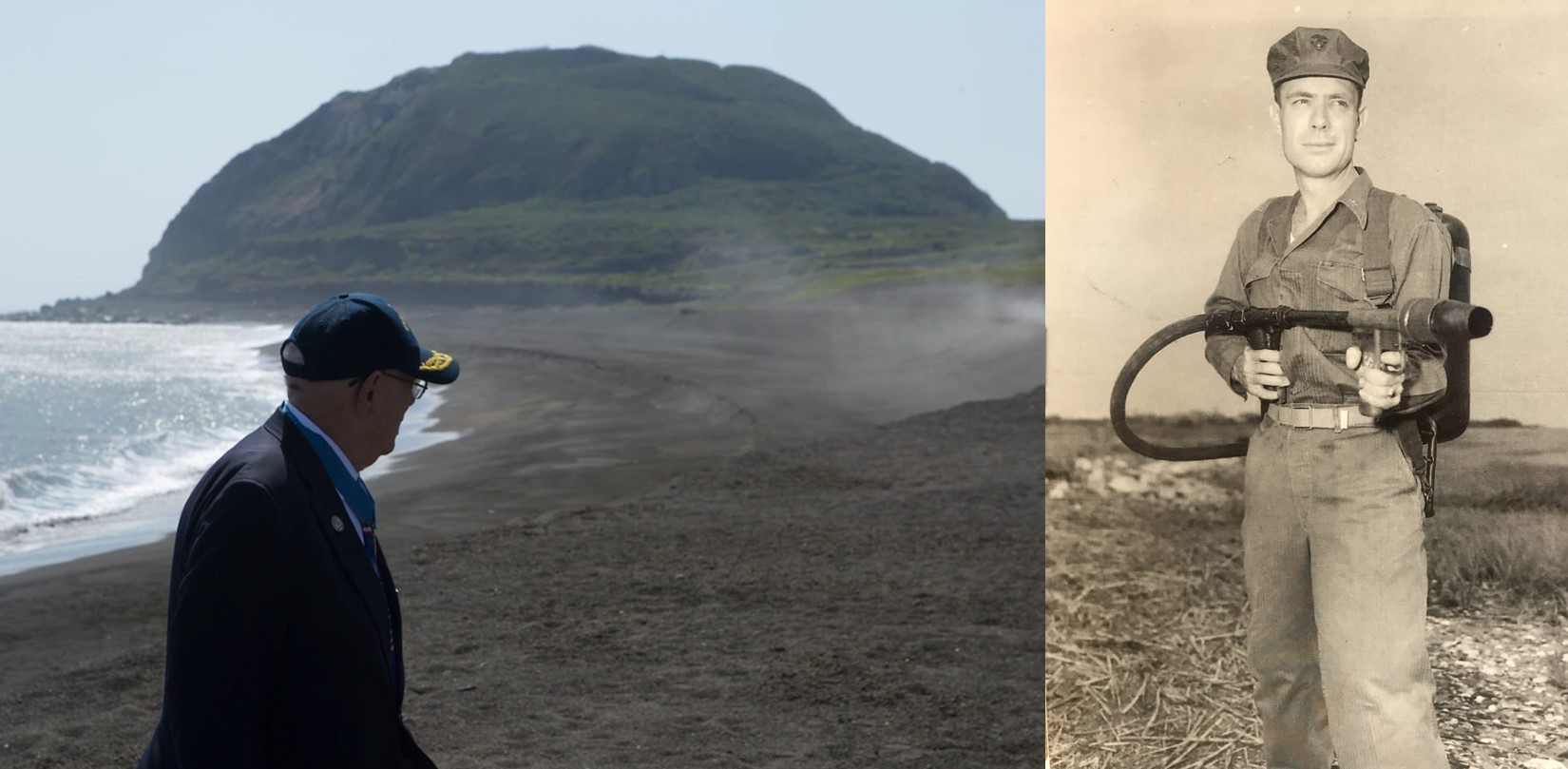
Woody Williams back on the Black Sands & a staged shot with his M2 Flamethrower.
Throughout “Return to Iwo Jima” the battle is recalled through clips of colored film shot by Navy photographers on the scene; watching this carnage we can only guess at the emotions of the American and Japanese survivors as they step once again on Iwo’s inhospitable soil.
The film focuses on these men, as individuals, as they try to express themselves; the bitterness, the guilt, the enmity; and finally, the feeling of forgiveness and reconciliation.

The RoH Ceremony the 3rd MarDiv Band (left) & the Japanese Maritime Self-Defense Force Band (right)
One of the Americans was shot in the face, and is still cruelly scarred, despite many operations. He has had to deal with self-hatred, hatred of the war and hatred of the enemy; but in the end, even he sheds a tear and shakes hands.
Another remembers a buddy whose legs were shot off, and how guilty he felt because he couldn’t help him. Another remembers how he had wanted to give something to a friend of his who was killed, and all he had to give him, when he stood at his grave, was a pen the friend had lent him.
There was reason enough for bitterness on both sides. In the end, reluctantly, tearfully, choking as they try to say it, the survivors forgive--not only the enemy but themselves.

LtGen “Larry” Snowden, USMC was the engine behind the Reunin of Honor as he was CO of Fox Co, 2nd Bn, 23rd Marines, 4th MarDiv during the battle.
I think that is why so few men write well about their war experiences. The hard part is forgiving yourself.
Only the other day I received a letter from someone saying, “You were a Marine in the war, on Iwo Jima; why don’t you ever write about it?”
Well, I have written about it. Every now and then I throw it in--”I landed in the third wave on Iwo Jima”; that’s all I have to say; those are my credentials; I’ve paid my dues.
I have told some funny stories about it, and some poignant stories. But I haven’t told the story that bothers me the most, the one that gave me nightmares for many years. We had just landed and three out of four of us were being hit.
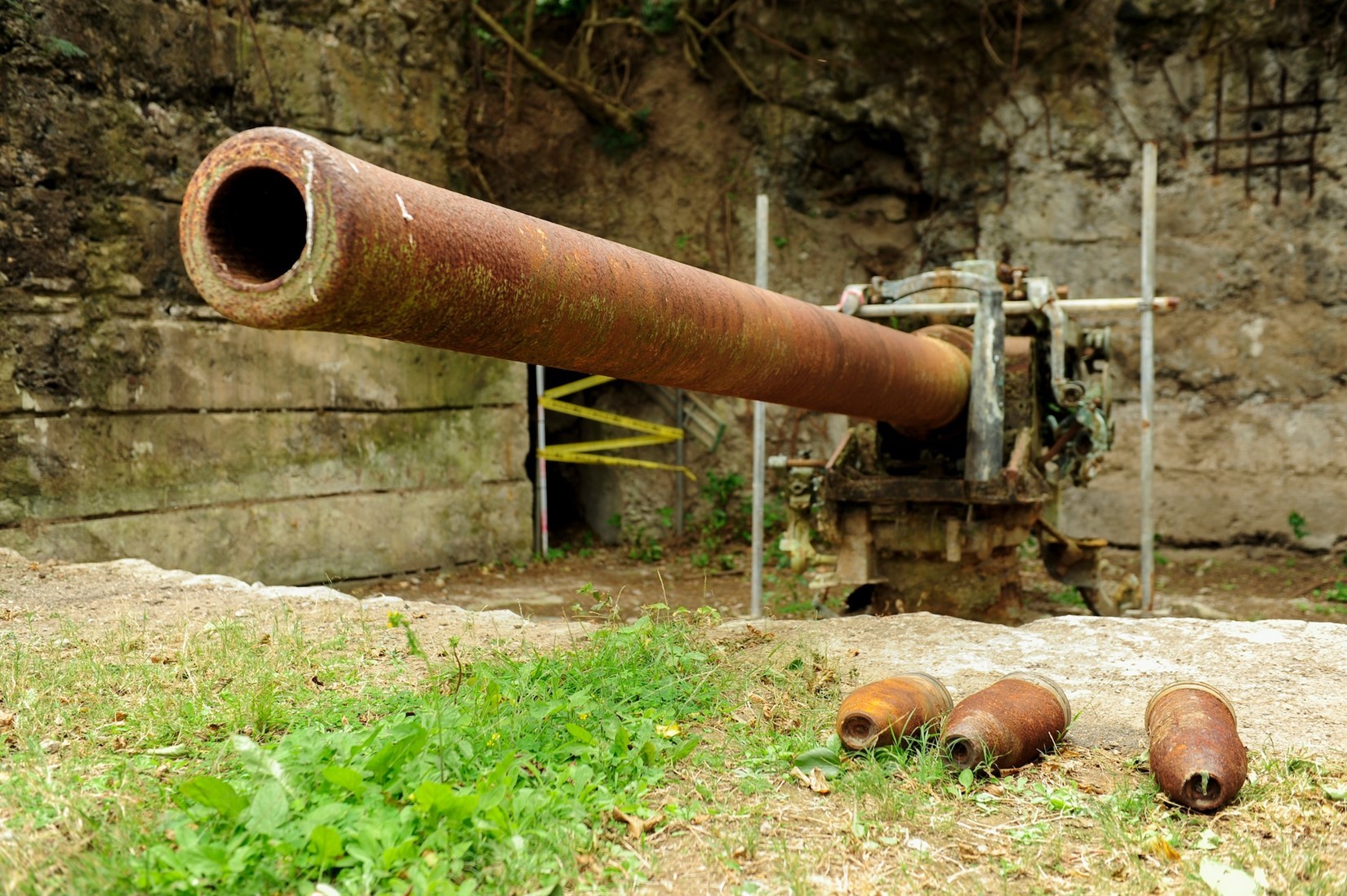
The Japanese guns were making big shell holes in the beach, and we took shelter in these. Ironically, they saved our lives, since the Japanese guns were zeroed in on the beaches. Every square foot was covered.
I found myself in a hole with two other men. We were all scared and at the edge of panic. We didn’t know where our units were. Remembering that the plan had been to get off the beaches as soon as possible, and go forward, I said, “We’ve got to get out of this hole and move up. The Japs are zeroed in on this beach.”

The most famous Combat Correspondent on Iwo, Joe Rosenthal (top, front left) & his second most famous shot the “Gung Ho” photo on Mt. Suribachi
The others agreed. I don’t know whether it was because they were privates and I was a sergeant. That shouldn’t have mattered. I wasn’t a line sergeant and had no authority to be giving orders. I was just a specialist, a combat correspondent.
But they nodded and started to scramble up the side of the hole. One after the other they went over the top, and out. I started to follow. Just as I neared the top, I heard a terrible clang; it felt as if a sledgehammer had hit my helmet. It knocked me back down a foot or two. I realized that a shell had landed out in front of the hole. Well, then, now was the time to go--before the next one came.

The top of Mt. Suribachi in 1985, the 5th Marine Division memorial to the left
I scrambled up out of the hole and started running. One of my comrades had vanished; maybe he had made it; maybe he had been blown away. The other was off to one side. He was kneeling, as if in prayer. His upper clothing had been blown off, so that his chest was partly naked. He had no head.
I ran on to the safety of the next hole, and one way or another, I survived.
So now that I’ve got that off my chest, maybe I can forgive the Japanese and me.”
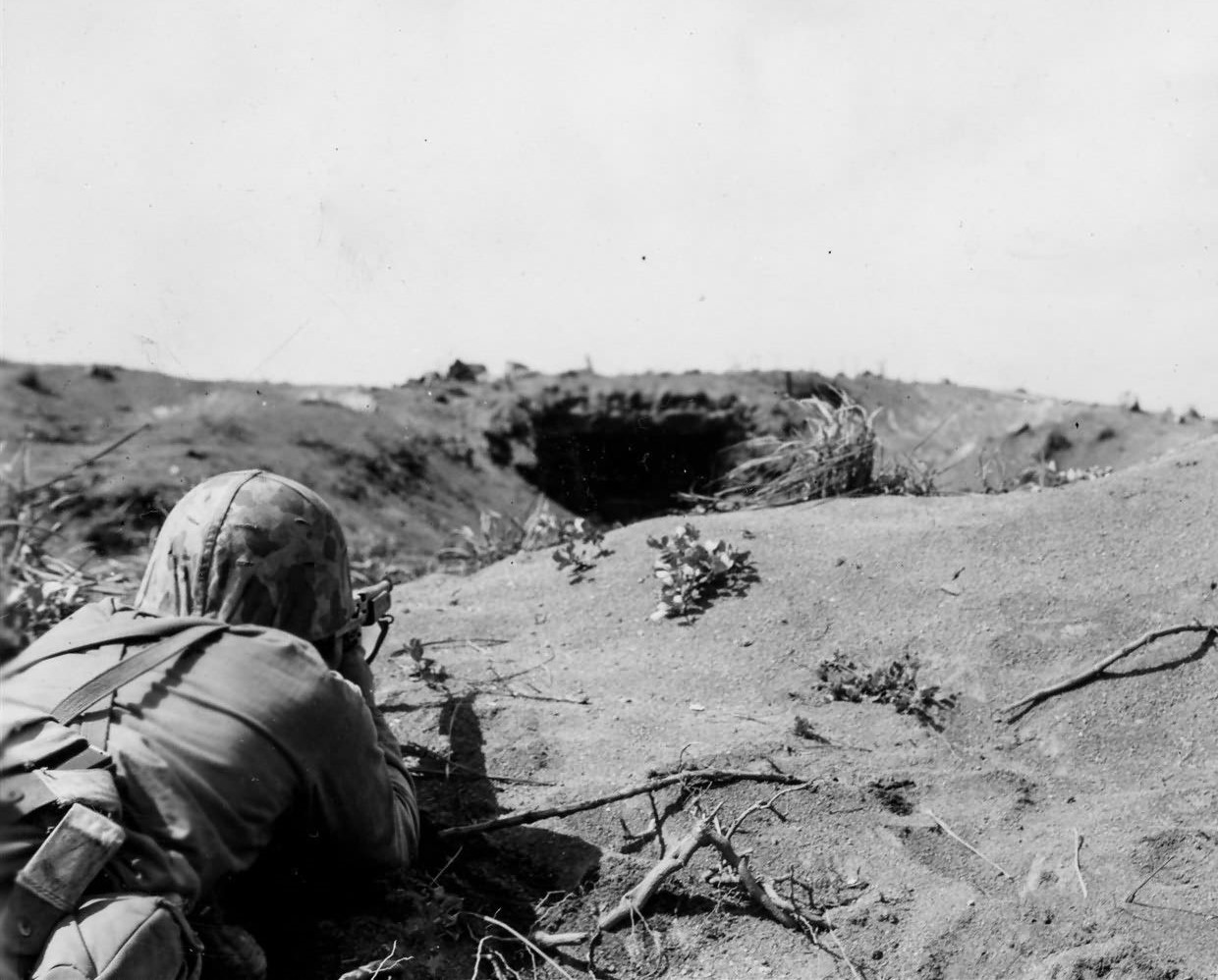
To prepare for the 80th Anniversary next March here are some great reads:
“My Brush With Uncommon Valor”
By M. G. Haynes - Veteran, Author, & Fan of History
https://www.mghaynes.net/blog/2020/10/24/uncommon-valor
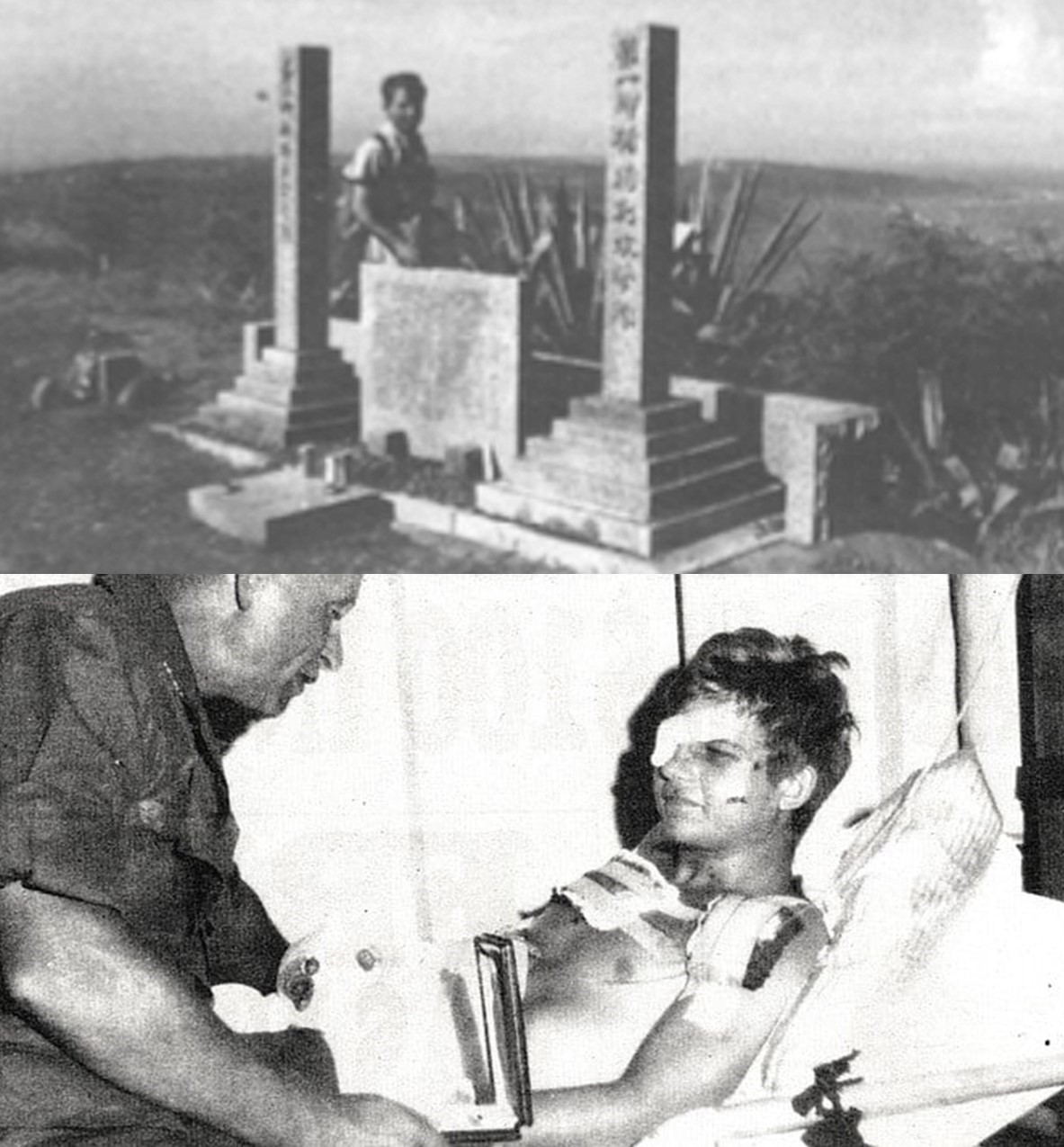
“The Meaning of Iwo Jima - I Explore the WWII Battlefield Insatiably”
By Ray Westberg (RIP) - San Diego Reader (Publish Date Sept. 7, 1989)
https://www.sandiegoreader.com/news/1989/sep/07/blood-island/#fastcomments-widget

“Operation Meatball - The Blog 70th Anniversary”
Return to the Black Sands of Iwo Jima pt. 1
By Liberty Phillips
https://www.operationmeatball.com/new-girlblog/return-to-iwo-jima-pt1

To attend the Iwo Jima Association of America Reunion of Honor’s 80th Anniversary Click Below:
https://miltours.com/index.php?route=product/category&path=61


